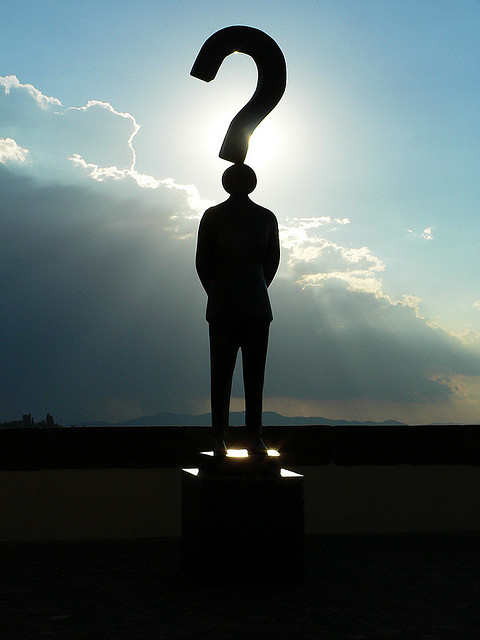Was Melchizedek Jesus or Someone Else?
The king-priest Melchizedek is introduced in Genesis 14:17-20. He is a bit of a strange character who seems to appears out of nowhere, and then disappears. We do not hear about Melchizedek again for a thousand years, when he shows up in the writings of David (Psalm 110:4). Melchizedek later becomes a prime topic of discussion in Hebrews. Because of this attention paid to an otherwise unknown character, some readers want to identify Melchizedek as Jesus. But are Melchizedek and Jesus one and the same?
Admittedly, if it were not for the extended excursus on Melchizedek in Hebrews 7, one might pass over the brief mention in Genesis 14. Yet, we should also note that there is quite a bit of prominence given in Psalm 110:4, where Melchizedek is mentioned in conjunction with the Messiah.
Because of the prominence given to Melchizedek in Psalm 110 and Hebrews 7, some have hypothesized that Melchizedek is actually an OT appearance of Jesus. Although there are some well known individuals who hold this position, I believe there are strong reasons to see Jesus and Melchizedek as being distinct individuals.
1. Melchizedek is always compared with Jesus, never equated.
David does not equate the Messiah and Melchizedek. Rather, he says the Messiah will correspond to the pattern seen in Melchizedek. Psalm 110:4b says, “You are a priest forever according to the order of Melchizedek.” The Hebrew word for “according to” is used elsewhere in three ways: reference (Eccl 3:18), result (Eccl 7:14), causal (Eccl 8:2). Here the nuance can only be reference, having the idea of association.
Additionally, if the author of Hebrews wanted a stronger argument, he could have come out and said that Jesus is Melchizedek. However, he steers from that language and says that Melchizedek is “made like the Son of God” (Heb 7:3). In other words, the author of Hebrews is pointing out that Melchizedek was designed to be like Jesus. He does not say they are the same person.
2. The length of Melchizedek’s priesthood and Jesus’ priesthood are described differently.
Hebrews 7:3 describes the priesthood of Melchizedek by saying, “having neither beginning of days nor end of life, but made like the Son of God, he remains a priest perpetually.” Some English versions translate the last part as “he remains a priest forever.” But forever is not the idea here. The phrase means “continually” or “without interruption.” Jesus was previously declared high priest forever (Heb 6:20), but here the author of Hebrews uses a different phrase which emphasizes the continual nature of Melchizedek’s reign, rather than emphasizing a never-ending priesthood.
3. The descriptions of Melchizedek are limited to his portrayal in Scripture.
The descriptions of Melchizedek’s priesthood in Hebrews 7 are meant to be focused on how he is portrayed in Genesis 14. In other words, the author of Hebrews describes Melchizedek exactly how he appears in Genesis 14:17-20.
Without father, without mother, without genealogy, having neither beginning of days nor end of life, but made like the Son of God, he remains a priest perpetually (Heb 7:3)
The alternative to the above view is to take these descriptions as unlimited statements that are unrelated to Genesis 14. However, in the context (vv. 1-2), the author has already begun the process of explaining the elements of the text that are found in Genesis 14:17-20. Hence, it makes much more sense to see verse 3 as an explanation of what is found in the text of Genesis 14:17-20 rather than a unlimited descriptive statement.
To paraphrase the author of Hebrews, “There is no biblical record of father or mother for Melchizedek. We don’t see his beginning or his end. He is just like Jesus, because his priesthood continues throughout his entire existence.” This corresponds with the later argument, that the eternal nature of Jesus’ life is what solidifies His everlasting priesthood (Heb 7:16).
So, Melchizedek is best viewed as a Job-like figure who served the true God, but was not a part of Abram’s immediate circle. If Melchizedek was not a preincarnate appearance of Christ, why is he important to the Bible storyline?
God designed biblical history to include an early picture of a king who is simultaneously a priest. Melchizedek provides an illustration for David to prophecy about the coming Messiah (Ps 110:4; cf. Zech 6:13), and he also provides the perfect backdrop for the author of Hebrews to explain the significance and superiority of Jesus as one who is both Son of David and heir to the thrown, as well as the priest who affects substitutionary atonement for sins.
photo credit: Marco Bellucci via photopin cc
Note: This post originally appeared on November 1, 2014. It has been heavily edited and reposted.
